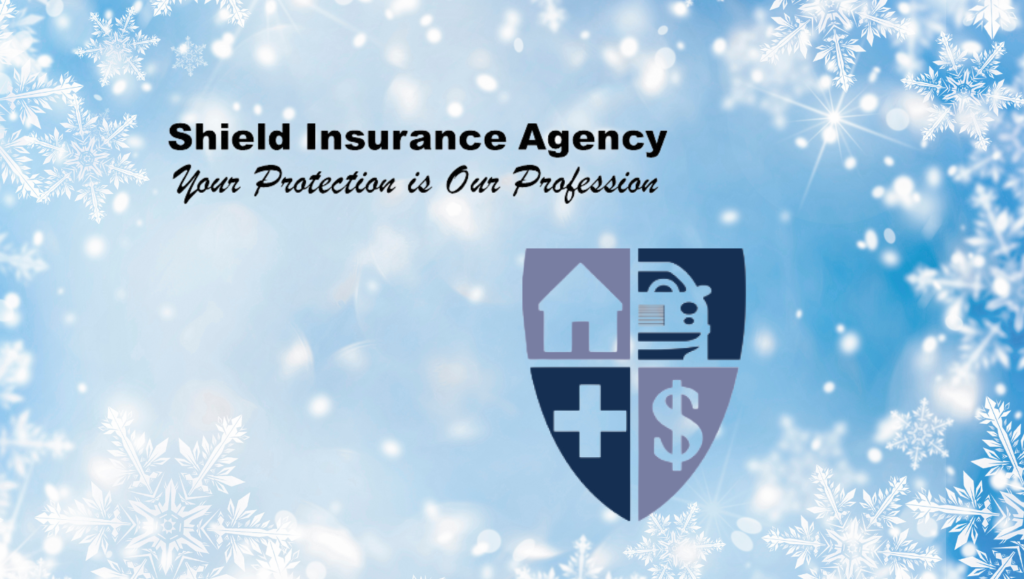Our winter driving season is here a little later this year than usual.
It’s amazing how many of us quickly forget our winter driving skills. For example, we all should know that you cannot stop as fast on an icy or snow-covered road as you can on dry pavement and that often the most slippery surfaces do not appear hazardous, like on bridges, overpasses, and underpasses. At intersections, the moisture emitting from the exhaust of cars waiting at a traffic light quickly freezes on the pavement and can be especially hazardous. And don’t be overly confident if your vehicle has anti-lock brakes; they are no substitute for using caution when traveling on slippery roads.
Just as important as good driving skills, however, are some commonsense issues that could save your life in the event you become broken down or stranded. A good place to start is with some “preventive maintenance.”
Make sure your car is in good mechanical condition. Temperature extremes always bring out the worst in your car, like dead batteries, soft tires, gasoline freeze, and carburetor and heating problems. Make sure that your antifreeze is at the proper level and that your wiper blades are new and your washer reservoir is full.
Prepare an emergency kit for your car. Include things that prepare you for the unexpected — what would you need if you found yourself stranded miles from help during a snowstorm? Include things like warm clothing, boots, stocking cap, gloves or mittens, flashlights with fresh batteries, flares, a small shovel, sand or kitty litter, blankets, and fresh first-aid supplies. You may also want to include candy bars or other nutritious snacks, as well as a supply of small candles and matches to light them with. A single lit candle in your vehicle can provide warmth that will help you survive for many hours, and with precautions is much safer than letting the engine run.
During inclement weather let people know where you are going, your route of travel, and when you expect to arrive. Cell phones are great safety insurance against breakdowns and getting stranded — but they do little good if you don’t know where you are! Stay alert and know precisely where you are at all times in the event you need to call for help. Watch for road signs and landmarks.
There are almost as many opinions as to how to drive safely on ice or snow as there are automobiles. Most crashes occur when you don’t expect the surface of the road to be slippery.
Many people get into trouble by assuming the roads will not be slippery unless the temperature is freezing or below. Ice can form on road surfaces, however, anytime the air temperature drops to 40 degrees or less, especially when it is windy. Bridges and underpasses can be especially hazardous, but these are not the only locations “black ice” can form. Any low or shaded area, area surrounded by landscape, or area that has a source of water running over the pavement can also be quick to form ice. Early morning hours are especially dangerous as the moisture has had an opportunity to sit on the cold pavement and freeze.
Others find themselves in trouble during the winter while driving on roads seemingly clear or only slightly wet, and then try to stop at an intersection only to discover that it is ice-covered and slippery. This is caused by the moisture emitting from the exhaust of cars waiting at a busy intersection and quickly freezing on the pavement.
Always approach intersections cautiously.
Some other basic safety tips for winter driving include allowing extra time to arrive at your destination. Slow down and be alert for other vehicles around you that may lose control and allow at least 4 seconds between vehicles. Troopers also recommend you allow no less than a car length in front of you when you are stopped behind another vehicle at a slippery intersection, and then watch your rear-view mirror for cars that may approach you too fast from behind. Often this extra margin of safety will allow you to pull forward if an approaching vehicle begins to slide. If the intersection is slippery, you can signal other drivers to the danger by turning on your hazard flashers.
If you find yourself beginning to slide on snow or ice, DON’T PANIC. Take your foot off the gas and DO NOT hit the brakes. Steer the front of your vehicle into the skid (the same direction you are sliding). This technique is used in both front- and rear-wheel-drive vehicles. If you must use the brakes, do not allow them to lock up; gently pump the brake pedal, unless your car is equipped with anti-lock brakes. If your car has anti-lock brakes, use a firm, steady pressure WITHOUT pumping. The grinding noise you hear and the surging you feel in the pedal are normal and indicate the brakes are working properly, allowing you to continue to steer and control the vehicle. And for you 4-wheel-drive enthusiasts, always remember that a 4-wheel-drive vehicle provides additional traction that is useful for going through deep snow, but it does not stop any faster.
State Police Troopers would like to remind you to “Don’t Wreck Your Life!” Use cautions this winter and always plan. Keep your eyes on the road, never drink and drive, and always wear your safety belt.
Submitted by Dawn
Latest Blogs
- Do You Need Recreational Insurance for Your Snowmobile in Michigan?
- The Importance of Giving Back During the Holiday Season
- Michigan Winter Driving: Essential Snow & Ice Safety Tips You Need to Know
- How Renters Insurance Can Save the Day During a Break-In
- The Hudsonville Annual Tree Lighting & Nighttime Holiday Parade was Magic.



















































